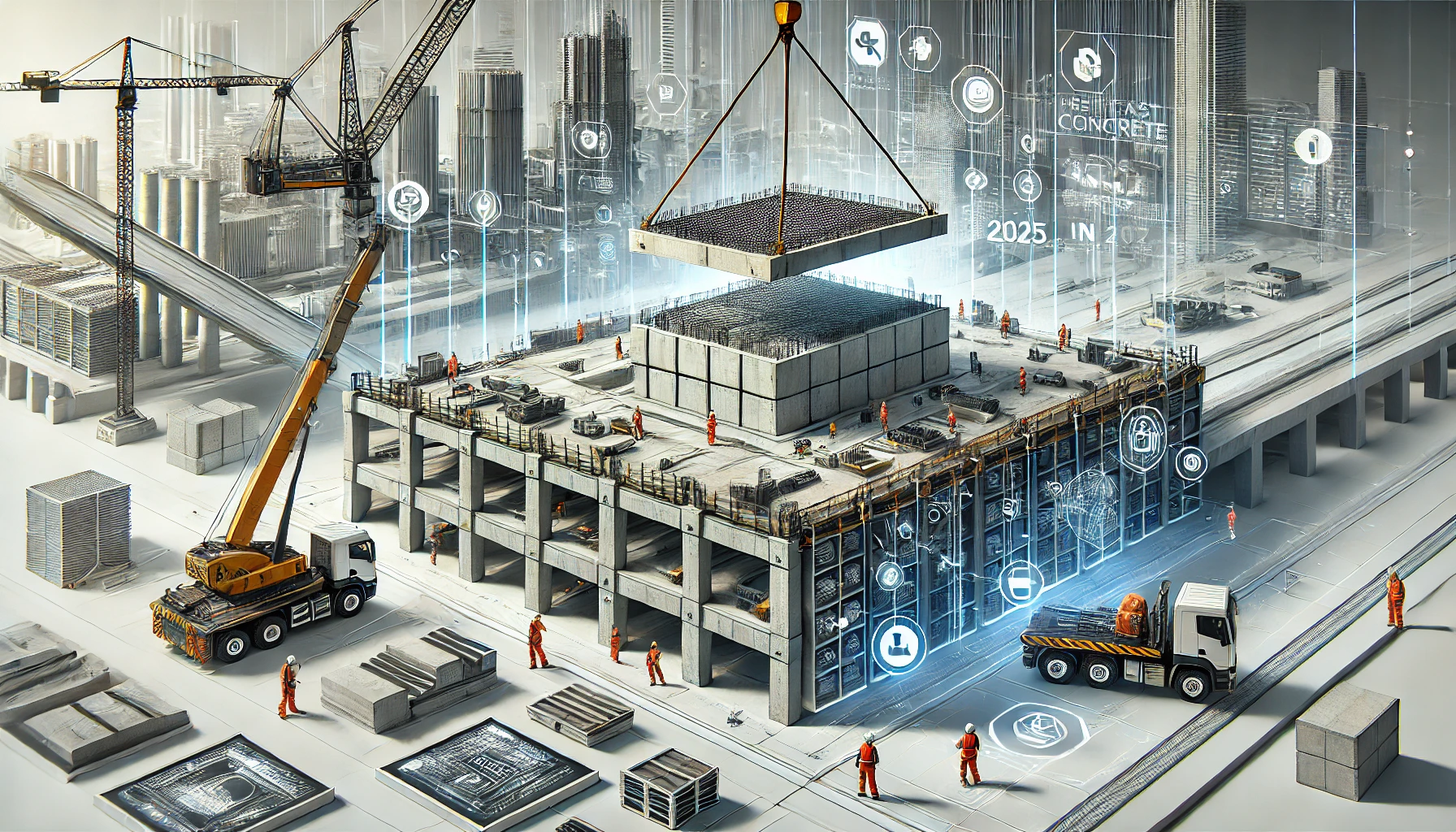
Precast concrete has long been a game-changer in modern construction, but in 2025, it’s not just an option—it’s a necessity. Contractors who master the latest advancements in precast detailing will gain a competitive edge, boosting efficiency, reducing costs, and ensuring compliance with evolving regulations.
This guide explores the key trends revolutionizing precast concrete detailing in 2025, with data-driven insights, case studies, and expert recommendations.
Why Precast Concrete Detailing Matters More Than Ever
Key Drivers of Change
The construction industry is rapidly evolving, and several factors are driving the transformation of precast concrete detailing:
- Economic Pressures: Rising labor shortages and material costs demand more cost-effective and time-efficient solutions.
- Sustainability Initiatives: New mandates require contractors to prioritize low-carbon materials and waste reduction strategies.
- Technological Disruptions: AI, automation, and digital twins are reshaping how precast concrete is designed, manufactured, and installed.
Understanding these forces will help contractors stay ahead in an increasingly competitive market.
Top 2025 Trends in Precast Concrete Detailing
1. AI-Driven BIM Workflows
Building Information Modeling (BIM) has been around for years, but in 2025, its integration with AI is making a bigger impact than ever. AI-enhanced BIM streamlines every phase of precast detailing—ensuring accuracy, eliminating rework, and optimizing scheduling.
Benefits of AI-Driven BIM:
- Reduces rework costs by up to 30% (Source: McKinsey & Company)
- Enhances collaboration among architects, engineers, and contractors
- Detects design clashes early, minimizing on-site errors
✅ Recommended Tools: Tekla Structures, Autodesk Revit, Trimble Connect
2. Sustainability-Centric Precast Designs
With stricter emissions targets, sustainable precast detailing is now a priority. Contractors are adopting low-carbon concrete mixes, reusable formwork, and optimized designs to cut material waste.
Case Study: Poundfield Precast’s Ultra-Low Carbon Concrete
Poundfield Precast has pioneered innovative solutions that reduce carbon emissions while maintaining performance. Their approach includes:
- Sustainable cement replacements
- Precision engineering for reduced material use
🌍 Impact: Contractors who implement similar strategies not only help the environment but also gain a competitive market position.
3. Automation in Precast Detailing
Manual detailing is becoming obsolete. In 2025, AI and machine learning are taking over repetitive tasks like reinforcement detailing, clash detection, and shop drawing generation.
✅ Essential Automation Tools:
- Tekla Structures: For high-detail 3D precast models
- Revit Precast Extensions: Automates panel splitting and reinforcement
- SOFiSTiK Reinforcement Detailing: Generates precise reinforcement schedules
🏆 Key Insight: Automation tools can cut detailing time by 50%, speeding up project delivery.
4. Modular and Prefabricated Systems
Modular construction continues to gain traction, with precast concrete at its core. The demand for flawless precast detailing is higher than ever, ensuring precision and minimizing rework.
🔹 Why It Matters:
- Speeds up project timelines by up to 50%
- Reduces on-site labor requirements
- Enhances overall build quality
Pro Tip: Invest in high-precision precast planning to reduce cost overruns and installation errors.
5. Digital Twins for Precast Structures
Digital twins—virtual replicas of physical structures—are transforming construction. These smart models allow real-time monitoring, predictive maintenance, and data-driven decision-making.
Case Study: Salesforce Tower
Turner Construction used digital twin technology for the Salesforce Tower in San Francisco. Results:
- $15 million saved in project costs
- Achieved a 100% safety record
ROI: Early adopters of digital twins are already experiencing higher project efficiency and cost savings.
Biggest Challenges Facing Contractors in 2025
1. Talent Gap in Digital Tools and BIM
The industry is facing a shortage of professionals skilled in BIM, AI, and automation. Investing in employee training is essential for long-term success.
🔹 Solution: Upskilling programs and BIM certification courses.
2. Navigating Complex Standards and Regulations
Compliance with new building codes and sustainability mandates can be challenging. Contractors must integrate compliance checks into their workflows.
✅ Recommended Tools for Compliance:
- BIM 360 Coordinate – Real-time clash detection and issue tracking
- Navisworks Manage – Pre-construction clash analysis
- Solibri Model Checker – Rule-based checking for regulatory compliance
3. Cost Constraints in Technology Adoption
While advanced tools come with high upfront costs, the long-term benefits outweigh the investment.
Pro Tip: Start small—adopt one technology at a time, measure its impact, and scale gradually.
Data-Driven Insights: The Future of Precast Concrete
Industry Statistics & Projections
- Global precast concrete demand is expected to reach $174.1 billion by 2025
- 20% reduction in project costs for contractors leveraging BIM workflows
- Automation adoption is expected to double by 2026
📊 Visual Idea: Bar graph showing market growth of precast concrete by region from 2020-2025
Conclusion: Future-Proofing Your Precast Construction Business
The future of precast concrete detailing is bright for contractors who adapt to these trends. By investing in AI-driven BIM, sustainable practices, automation, modular construction, and digital twins, you can:
- Reduce costs and eliminate errors
- Meet sustainability goals with ease
- Stay ahead of regulatory changes
- Enhance collaboration and efficiency
By proactively embracing these innovations, contractors can position themselves as leaders in the future of precast construction. Are you ready to make the shift?
Learn about Eco-Friendly Wall Plaster: The Future of Construction